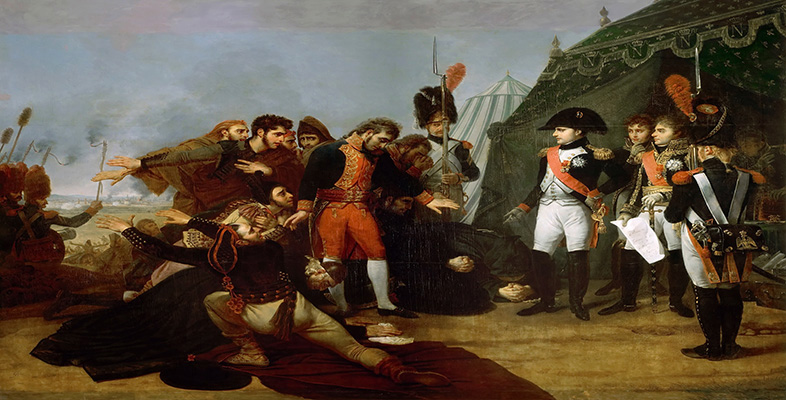Napoleonic paintings
Introduction
If you visit the Louvre museum in Paris and choose the route leading to the Denon wing, you will find on the first floor two vast galleries, the Daru room and the Mollien room, devoted to late eighteenth- and early nineteenth-century French painting. Although they also contain many comparatively small works, notably portraits, these galleries are dominated by colossal pictures depicting historical and mythological subjects. Many of the images that we will be discussing in this course belong to this genre. At the time, ‘history painting’ (as it is generally known) constituted by far the most prestigious genre of painting for two principal reasons. First, it was considered to be far more demanding than the so-called lower genres (portraiture, landscape, still life, etc.): not only did the history painter have to work out a large-scale composition involving the human figure, but he was also expected to represent nature in its ideal forms rather than merely copying the familiar appearance of things, like artists who practised the lower genres. (The masculine pronoun is deliberate. It was extremely difficult for women to become history painters. Female students were not admitted to the Royal Academy of Painting and Sculpture. The core of its tuition was the life class, which involved drawing from the naked (male) model, so women were excluded on grounds of modesty.)
Second, the subject matter of history paintings was considered to be much more significant than that of the lower genres, on account both of the exalted status of the gods and heroes who were depicted in them and of the elevating moral messages that they offered to the viewer. At least, this was the theory; the practice was often rather different, as we will see from considering examples produced during the Napoleonic era. This was increasingly to be the case as the nineteenth century progressed.
This OpenLearn course provides a sample of Level 2 study in Arts and Humanities [Tip: hold Ctrl and click a link to open it in a new tab. (Hide tip)] .
